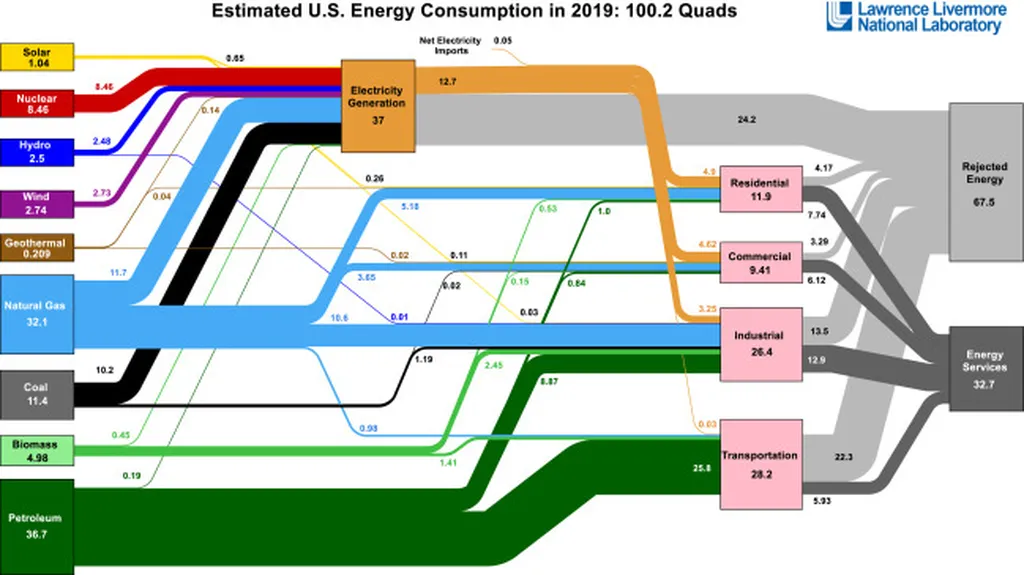Researchers Dakota Thompson and Amro M. Farid from the University of Massachusetts Amherst have developed a novel approach to modeling and analyzing the complex interdependencies of the American Multi-Modal Energy System (AMES). Their work focuses on understanding the behavioral dynamics of the AMES, which encompasses the electric grid, natural gas system, oil system, and coal system. By employing Hetero-functional Graph Theory (HFGT) and a weighted least squares error optimization program, they have created a state estimation model that provides unprecedented granularity in tracking mass and energy flows across these interconnected systems.
The research builds upon previous work in state estimation, which has been instrumental in the operation and development of the American Electric Power System. However, this study extends the application of state estimation beyond the electric grid into the more complex and heterogeneous environment of the AMES. The team’s approach combines data-driven and model-based systems engineering methods with HFGT to develop a Weighted Least Squares Error Hetero-functional Graph State Estimation (WLSEHFGSE) optimization program. This program is designed to estimate the optimal flows of mass and energy through the AMES, providing a comprehensive understanding of the system’s behavior.
One of the key innovations of this research is the integration of state estimation methods with HFGT. This integration allows for the recovery of mass and energy flows in a system-of-systems like the AMES with asset-level granularity. The researchers modeled two regions of the AMES to demonstrate the effectiveness of their approach. By analyzing the behavior of these regions, they were able to provide examples of how to analyze system behavior and the critical matter and energy flows through the system.
The practical applications of this research are significant for the marine sector, particularly in the context of energy infrastructure and policy development. Understanding the interdependencies and behavioral dynamics of the AMES can inform more effective policies and strategies for managing energy resources. For example, the maritime industry relies heavily on oil and natural gas for fuel and operations. By gaining a better understanding of the flows and interdependencies within the AMES, stakeholders in the maritime sector can make more informed decisions about energy procurement, logistics, and sustainability practices.
Moreover, the WLSEHFGSE optimization program developed by Thompson and Farid can be a valuable tool for energy system operators and policymakers. It provides a detailed and accurate estimation of mass and energy flows, which can be used to optimize energy distribution, reduce inefficiencies, and minimize environmental impact. This level of granularity and precision is crucial for developing and enacting effective policies that address the pressing challenges of global climate change and energy sustainability.
In summary, the research conducted by Dakota Thompson and Amro M. Farid represents a significant advancement in the field of energy systems analysis. Their innovative approach to modeling and analyzing the AMES using HFGT and state estimation methods offers valuable insights into the complex interdependencies of energy infrastructure. The practical applications of this research have the potential to shape the development of more effective energy policies and strategies, benefiting not only the maritime sector but also other industries reliant on the AMES. Read the original research paper here.

